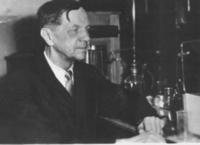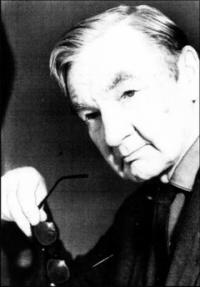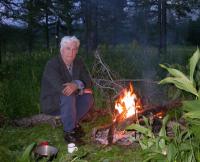You are here
Tronov’s mountain climber of peaks of Altai.



Climbing Belukha from Lake Yazevoe.
“In Altai Mount Belukha is called Uch-Sure, Uch-Orion, Sure - the dwelling of the gods. The name given by the Russian pioneers, seekers of Belovodye, peasants and hunters, settled back in the 18th century in the valleys of Katun and Bukhtarma - Belukha - was instilled. And this is understandable: all the snow-capped mountains are squirrels, and the highest is Belukha”
A. Bunge. 1829.
Walk from Yazevoy Lake to Belukha.
In 1786, two people, M. Pakkar and J. Balma, climbed the highest peak of the Alps Mont Blanc. This event marked the beginning of an exciting sporting and scientific activity in mountaineering. Years passed and climbers conquered the peaks of mountains of different countries and continents one after another.
The turn did not immediately reach Altai, where Belukha with a height of 4506 meters was the highest peak. As soon as they did not call her: the two-headed queen of Siberia, Altai Mont Blanc, Katun pillars. The artist and philosopher N.K. Roerich, who visited at its foot in 1926, writes:
“In Altai Mount Belukha is called Uch-Sure, Uch-Orion, Sure - the dwelling of the gods. The name given by the Russian pioneers, seekers of Belovodye, peasants and hunters, settled back in the 18th century in the valleys of Katun and Bukhtarma - Belukha - was instilled.
And this is understandable: all the snow-capped mountains are squirrels, and the highest is Belukha.” Here is almost the first description of Belukha, given in 1829 by A. Bunge, one of the companions of the famous traveler and botanist Ledebour.
“The plain was surrounded by steep mountains on all sides ... in the southeast there was a large lake of Maralje, in the northeast, gigantic Katun pillars rose in flames in the rays of the setting sun in their eternally unchanged snow shroud.
I was absolutely delighted with the sight of these magnificent mountains, which were the purpose of my trip." And here is the description made by Semenov Tien-Shan in 1877 according to the stories of eyewitness travelers:
“If you look at the Katun pillars from the ridge that serves as the watershed of the sources of Katun and Berel then in the middle of them rise two gigantic pointed Spitz, separated by a horizontal ridge. The Russians call these spurs covered with eternal snow and shining in the sunlight with their unusual whiteness - Belukha.
Another view is Belukha from the north side. From here it seems less brilliant and less colossal, because it is obscured by other snow squirrels. One hunter tried to enter Belukha from the Katunsky glacier, but the steepness of the mountain and the width of the cracks in the icy snow put insurmountable obstacles for him."
The first serious attempt to climb the highest peak of Altai was made in 1890 by the famous researcher and glaciologist V.V. Shoemakers. With his companions, he ascended to the saddle, reaching a height of 4050 meters. Bad weather and lack of time prevented the continuation of the ascent and climbers went down.
Ascent was made from the south (from the Kazakhstan side), along the easiest route, along the Katunsky glacier. By the way, and N.K. Roerich, recording the local traditions of the Altaians, noted: “They climb Mount Uch-Sure along a white hatik (scarf),” that is, along a glacier.
However, this remark is completely unnecessary, as evidenced by the words of V. Sapozhnikov: “The high mountains serve the Kalmyks as an object of sacred reverence: none of them dare to climb upon them under pain of death. Belukha’s charm on the Kyrgyz is even greater: “we can’t look closely at her,” said an old man from the village at the top of Black Berel.
Sapozhnikov’s baton was taken by brothers Mikhail and Boris Tronov, native Siberians who grew up in the city of Zmeinogorsk. Their father Vladimir Dmitrievich Tronov worked as a doctor, and in his spare time he traveled a lot in Altai.
His research was so serious that he was twice awarded a silver medal of the Russian Geographical Society twice in 1895 - 1896 for discovering glaciers in the upper reaches of Bukhtarma and describing the Rakhmanov Keys.
Accompanying his father, the brothers got acquainted with the nature of the Altai highlands, gained research skills, and eventually became independent scientists. Mikhail was especially successful in glaciology of Altai. Born in 1892, he studied first at Moscow University, then at Tomsk, where he remained at the Department of Meteorology since 1926.
Since then, all his scientific activities have been associated with this university. But long before this, the brothers undertook the first independent expeditions to study Altai. In 1912, they examined the South Altai Range and passed a series of passes.
In 1913, the investigation of southern Altai was continued, and then an attempt was made to climb Belukha, which ended in failure. Bad weather prevented. There are no easy ways to the top of Belukha, but the route from the sources of Katun along the Gebler Glacier is more accessible.
But here, steep firn and ice fields alternate with ruptures of cracks and ice cliffs. In addition, most of the time the peak is shrouded in a layer of clouds. Only in the early morning, the double-toothed Belukha sparkles with sharp edges of ice peaks, and closer to noon, evaporation from snow fields in the form of fog again close the peak.
In 1914, the Tronov brothers again at the southern foot of the Belukha. The first two climbing attempts fail due to bad weather. But experience gradually comes and the brothers change tactics. To gain time, they camp as high as possible, on a separate ridge not far from the saddle.
The next day, leaving in the morning, the climbers reached the saddle by 10 o’clock. The weather began to deteriorate, and local guides refused to further rise, but the brothers firmly decided to continue the assault, choosing an eastern, higher peak.
There were about 500 meters of ascent to the summit along a very steep edge of the summit pyramid. Clouds overtook them on the crest, snow began to fall, a strong wind was falling, but climbers stubbornly moved up. Their courage and perseverance were rewarded and at 15.30 on June 30 they reached the summit.
So for the first time Belukha was subdued by man. There was little time left for the descent. Tired climbers were in a hurry to reach the camp before dawn. In a hurry, they allowed falls and breakdowns, but everything ended happily. At 5 p.m. the brothers were on the saddle, and by 8 p.m. together with the guides they went down to the bivouac.
In 1915, the brothers examined the Southern Altai Range, which is located on the border with China within what is now Kazakhstan. To better see the glaciers at the head of Bukhtarma, they rise to a peak with a height of 3585 meters, calling it Krugozorny.
The next 1916 finds them in the Ukok plateau on the border with Mongolia, where the Tabyn-Bogdo-Ola mountains rise and the largest glaciers of the Mongolian Altai are located. The main goal of the Tronov brothers is the study of glaciers, but the climbing excitement drives them to the highest mountain Katun (Cold).
For a long time they were looking for ways to approach the summit - it was always cut off by steep steeps - and settled on the option of climbing from the east, from the Potanin glacier in the valley of the Tsagan-Gol River (Mongolia). The brothers climbed to a height of 4000 meters without much difficulty, but then a dangerous path began with the risk of collapse from a narrow ridge.
The moment was critical: “On the ridge, a snow canopy alternates with outcrops of granite, and on the sides of the cliffs are becoming deeper. This continues to a height of 4000 meters, from where the dangerous place of the ridge begins. The comb loses its slope, but becomes extremely thin.
A snow canopy on it spreads from one side to the other, and deep abysses open on the sides with dark hollows of broken snow. After a moment's hesitation, we stepped onto the ridge, stepping so as not to fall in one direction and not slide into the other.
The crest became thinner and, finally, no more than a quarter of the arshin (18 cm - A.L.) remained of the sloping spot where the foot could step. This relatively small transition leaves a rather terrible impression and is the only difficult place on our chosen route.
Above the ridge again became wider, and the rise is steeper, and after an hour at eleven and a half hours we climbed up to a small snowy platform at an altitude of 4300 meters. Only in the west did the highest points of Kiytyn rise a little higher above us, suddenly finding themselves in a deep abyss.
Advancement along the ridge from our point up to the highest points seemed quite possible, but it was decided to abandon this plan, because dark clouds were coming around, already covering the horizon." According to the definition of the Tronovs, the height of the three peaks of Katun is 4400 - 4450 meters, that is, still lower than Belukha (according to Sapozhnikov's definition, it is higher).
In total, M. Tronov completed 42 expeditions, thanks to which it was established that Altai is the third largest region of mountain glaciation (after Central Asia and the Caucasus) of the Soviet Union. If after the research conducted by V. Sapozhnikov within the Russian Altai there were 50 glaciers with a total area of 200 square kilometers, then by 1970 there were 1026 of them, and the area of glaciation was more than 800 square kilometers.
Mikhail Tronov became the country's largest glaciologist. He was an honorary member of the Geographical Society of the USSR, he wrote and published more than 250 scientific papers. Name M.V. Tronova is assigned to one of the glaciers and the peak in Altai.
Belukha became one of the most popular peaks among climbers. Until 1970, there was a climbing camp "Aktru" near the northern slopes of Belukha. In 1933, climbers led by V. Abalakov climbed Belukha from the north from the Akkem valley, and descended to the south.
100 years after the discovery of the Katun pillars by Gebler, the first All-Siberian Alpiniad was held by Beller at Belukha, when 43 people climbed the summit. Belukha is still a popular peak of Russian and Kazakhstan climbers.
Authority:
Naturalist writer, photo artist, local historian Alexander Lukhtanov.







